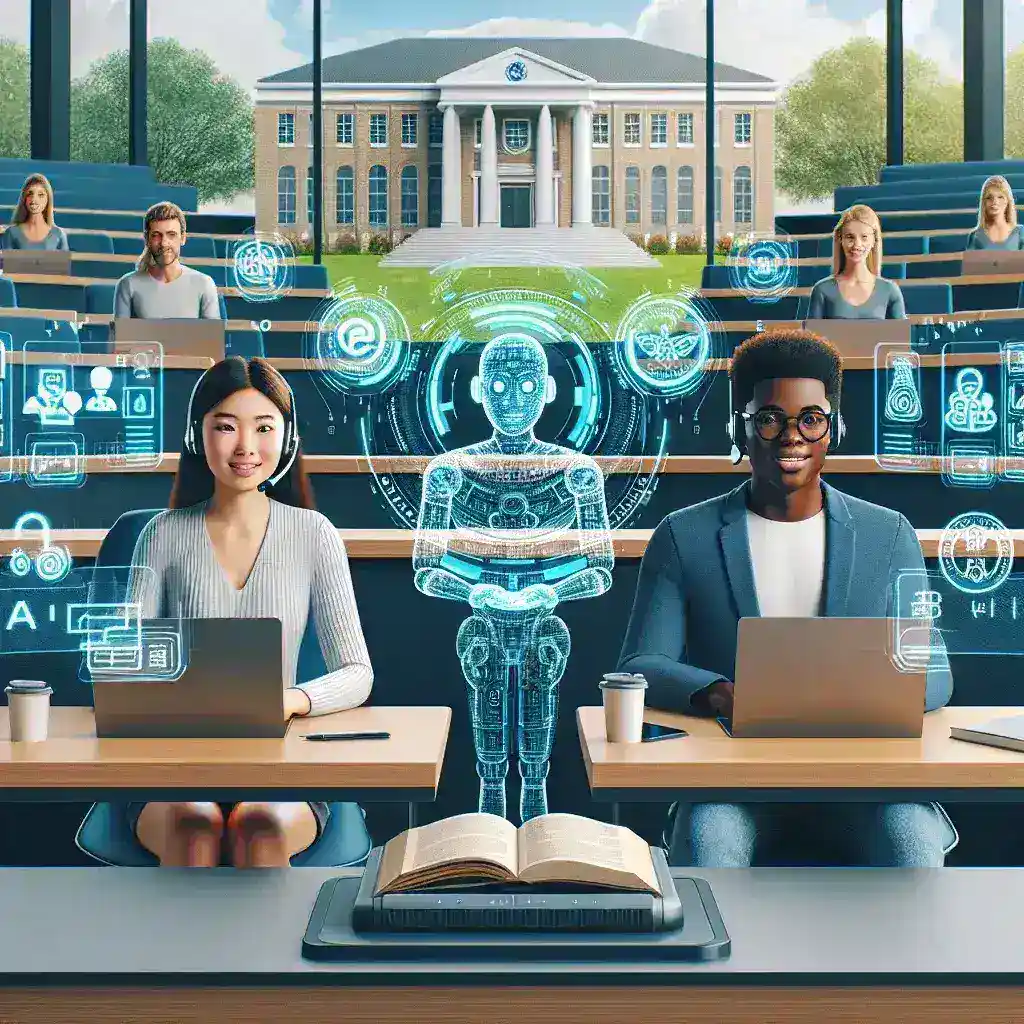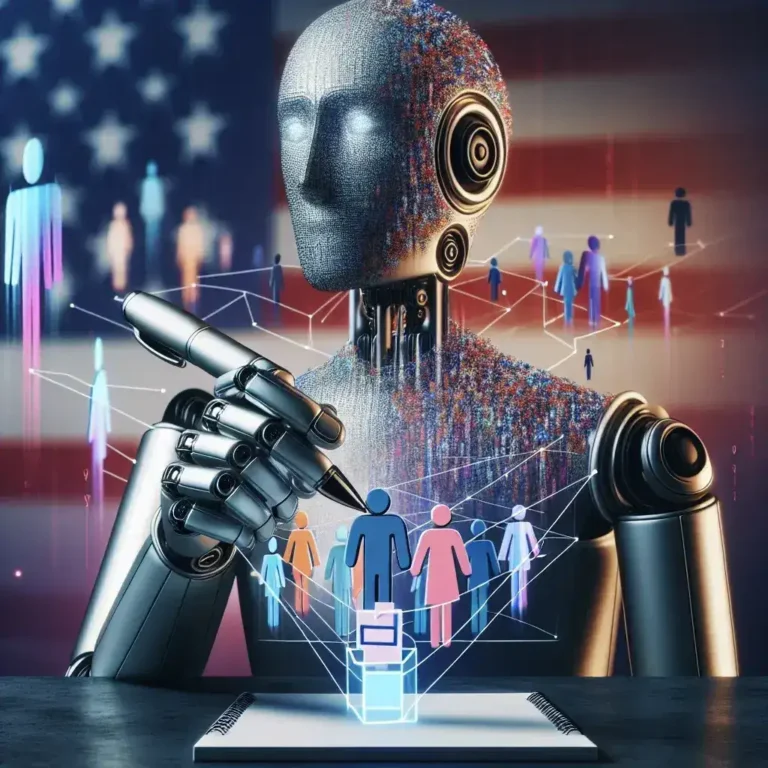The Dawn of AI-Enhanced Language Education in American Higher Education
The landscape of foreign language education in American universities is experiencing a revolutionary transformation this semester. Institutions across the United States are implementing sophisticated artificial intelligence-powered tutoring systems that promise to reshape how students learn languages. This technological advancement represents more than just a trend; it signals a fundamental shift toward personalized, accessible, and efficient language acquisition methods.
Universities from coast to coast are embracing these innovative platforms, recognizing that traditional classroom instruction, while valuable, often fails to provide the individualized attention and practice opportunities that language learners desperately need. The integration of AI tutors addresses these gaps by offering round-the-clock availability, personalized feedback, and adaptive learning experiences tailored to each student’s unique pace and learning style.
Understanding AI-Powered Language Tutoring Technology
Artificial intelligence language tutors represent a sophisticated blend of natural language processing, machine learning algorithms, and conversational AI technology. These systems are designed to simulate human-like interactions while providing consistent, patient, and judgment-free learning environments. Unlike human tutors who may have scheduling constraints or varying expertise levels, AI tutors offer unlimited availability and access to vast linguistic databases.
The technology behind these systems incorporates advanced speech recognition capabilities, enabling students to practice pronunciation and receive immediate feedback on their accent and intonation. Machine learning algorithms analyze student responses, identify common mistakes, and adapt future lessons to address specific weaknesses. This level of personalization was previously impossible to achieve on a large scale in traditional classroom settings.
Core Features of Modern AI Language Tutors
Contemporary AI language tutoring platforms integrate multiple sophisticated features that enhance the learning experience. Real-time conversation practice allows students to engage in natural dialogue scenarios, from ordering food in a restaurant to conducting business meetings. The AI responds contextually, maintaining conversation flow while correcting errors and suggesting improvements.
Advanced grammar analysis engines examine student writing and speech patterns, providing detailed explanations of grammatical rules and exceptions. These systems don’t merely identify mistakes; they explain the underlying linguistic principles, helping students understand the “why” behind correct usage. Cultural context integration ensures that students learn not just the language but also the cultural nuances that inform proper communication in different situations.
Leading Universities Pioneering AI Language Education
Stanford University has emerged as a frontrunner in implementing AI-powered language tutors, integrating these systems into their comprehensive language programs. Their approach combines traditional classroom instruction with AI-enhanced practice sessions, creating a hybrid model that maximizes learning efficiency. Students report significant improvements in speaking confidence and grammatical accuracy within the first semester of implementation.
The University of California system has rolled out AI tutoring across multiple campuses, focusing particularly on high-demand languages such as Mandarin, Spanish, and Arabic. Their implementation strategy emphasizes accessibility, ensuring that students from diverse economic backgrounds can benefit from these advanced learning tools. The system tracks student progress across multiple metrics, providing detailed analytics to both students and instructors.
East Coast Implementation Success Stories
Harvard University’s language department has integrated AI tutors into their curriculum with remarkable results. Students using the AI-enhanced program demonstrated 40% faster vocabulary acquisition compared to traditional methods. The system’s ability to provide immediate feedback and endless practice opportunities has proven particularly beneficial for students struggling with pronunciation and conversational fluency.
New York University has taken a comprehensive approach, implementing AI tutors across fifteen different language programs. Their success metrics include improved retention rates, higher course completion percentages, and enhanced student satisfaction scores. The university’s data indicates that students using AI tutors spend an average of 60% more time actively practicing the target language compared to traditional study methods.
The Student Experience: Transforming Language Learning
Students across participating universities report dramatically different learning experiences compared to traditional language instruction. The elimination of embarrassment and judgment creates a safe space for experimentation and mistake-making, which are crucial components of language acquisition. Many students describe feeling more confident speaking in class after extensive practice with their AI tutors.
The personalized nature of AI tutoring addresses individual learning preferences and speeds. Visual learners benefit from integrated graphics and written exercises, while auditory learners engage with extensive listening and speaking practice. Kinesthetic learners interact with gesture-based exercises and interactive simulations that reinforce learning through physical engagement.
24/7 Accessibility and Its Impact
Perhaps the most significant advantage of AI tutors is their constant availability. Students no longer need to coordinate schedules with human tutors or wait for office hours to get help with challenging concepts. This accessibility has proven particularly valuable for non-traditional students, including working adults and parents, who may have irregular schedules that make traditional tutoring arrangements difficult.
International students have found AI tutors especially beneficial for bridging language gaps outside of formal classroom settings. The systems provide patient, repetitive practice opportunities that help build confidence before engaging in high-stakes academic or social situations. Many report that AI tutoring has accelerated their overall academic success by improving their English proficiency more rapidly than traditional methods alone.
Pedagogical Advantages and Educational Benefits
The integration of AI tutors into university language programs offers several distinct pedagogical advantages. Immediate feedback prevents the reinforcement of incorrect patterns that can become entrenched over time. Traditional classroom settings often involve delays between student output and instructor correction, allowing mistakes to be repeated and potentially memorized incorrectly.
Adaptive learning algorithms ensure that students are consistently challenged at an appropriate level. The AI continuously assesses student performance and adjusts difficulty accordingly, preventing both boredom from overly simple exercises and frustration from impossibly challenging tasks. This dynamic adjustment maintains optimal learning conditions throughout the educational journey.
Data-Driven Learning Analytics
AI tutoring systems generate comprehensive learning analytics that provide valuable insights for both students and instructors. Students can track their progress across multiple dimensions, including vocabulary acquisition, grammatical accuracy, pronunciation improvement, and conversational fluency. These metrics help learners identify strengths and weaknesses, enabling more focused study efforts.
Instructors benefit from aggregated class data that reveals common problem areas and successful teaching strategies. This information allows for more targeted classroom instruction, with teachers able to focus on concepts that AI tutors identify as particularly challenging for their students. The data also helps inform curriculum development and instructional design decisions.
Addressing Challenges and Limitations
Despite their numerous advantages, AI-powered language tutors face several challenges and limitations that universities must address. Technology reliability remains a concern, as system outages or glitches can disrupt learning schedules and frustrate students. Universities are investing in robust infrastructure and backup systems to minimize these disruptions.
The question of cultural authenticity presents another challenge. While AI systems can provide grammatically correct language instruction, they may struggle to convey subtle cultural nuances and context-dependent communication styles that human native speakers naturally understand. Universities are addressing this by combining AI tutoring with cultural immersion experiences and interactions with native speaker teaching assistants.
Balancing Technology with Human Interaction
Educational experts emphasize that AI tutors should complement, not replace, human instruction. The social aspects of language learning, including group discussions, cultural exchange, and emotional connection, remain uniquely human domains. Successful implementations maintain a balance between technological efficiency and human warmth, ensuring that students develop both linguistic competence and cultural understanding.
Some students initially resist AI tutoring, preferring traditional human interaction. Universities have found success in gradual implementation strategies that allow students to experience the benefits of AI tutoring while maintaining access to human instructors and tutors. This approach helps build confidence and acceptance over time.
Cost-Effectiveness and Institutional Benefits
The financial implications of AI tutoring implementation present both opportunities and challenges for universities. Initial setup costs can be substantial, requiring investments in software licensing, hardware infrastructure, and staff training. However, long-term operational costs are typically lower than maintaining large staffs of human tutors, particularly for less commonly taught languages.
Universities report significant efficiency gains in their language programs. AI tutors can simultaneously serve hundreds of students, providing personalized attention that would require dozens of human tutors to achieve. This scalability allows institutions to expand their language offerings without proportional increases in staffing costs.
Return on Investment Metrics
Early adopting universities are beginning to see measurable returns on their AI tutoring investments. Improved student retention rates in language programs translate to increased tuition revenue, while enhanced learning outcomes boost institutional reputation and attract prospective students. Some universities report that their AI-enhanced language programs have become significant recruiting tools for attracting academically ambitious students.
The efficiency gains extend beyond direct cost savings. Faculty members can focus more time on advanced instruction, cultural education, and research activities rather than basic skill drilling and repetitive correction tasks. This shift allows for more sophisticated and engaging classroom experiences that capitalize on uniquely human teaching capabilities.
Future Implications and Industry Predictions
The trajectory of AI-powered language tutoring suggests continued expansion and sophistication in the coming years. Industry experts predict that virtual reality integration will create immersive language learning environments that simulate real-world cultural contexts. Students may soon practice ordering food in a virtual Parisian café or negotiate business deals in a simulated Tokyo boardroom.
Machine learning capabilities are expected to become increasingly sophisticated, with AI tutors developing more nuanced understanding of individual learning patterns and preferences. Future systems may incorporate emotional intelligence algorithms that recognize student frustration, confusion, or boredom and adjust their teaching approach accordingly.
Potential for Global Educational Impact
The success of AI tutoring in American universities has implications for global education access. These technologies could democratize high-quality language instruction, making expert-level tutoring available to students in underserved regions or developing countries. International educational partnerships may emerge, with American universities sharing their AI tutoring platforms with institutions worldwide.
The standardization of AI tutoring platforms could facilitate student mobility and transfer credits between institutions. Students might begin language study at one university and seamlessly continue with the same AI tutor system at a different institution, maintaining continuity in their learning progression.
Implementation Strategies and Best Practices
Successful AI tutoring implementation requires careful planning and stakeholder engagement. Universities have found that faculty buy-in is crucial for successful adoption. Training programs help instructors understand how to integrate AI tutoring into their existing curricula and leverage the technology to enhance rather than replace their teaching efforts.
Student orientation programs introduce learners to AI tutoring capabilities and help them develop effective study strategies using these new tools. Universities that invest in comprehensive onboarding processes report higher student satisfaction and engagement rates with their AI tutoring systems.
Technical Infrastructure Considerations
Robust technical infrastructure forms the foundation of successful AI tutoring programs. Universities must ensure adequate bandwidth, server capacity, and cybersecurity measures to support potentially hundreds of simultaneous users. Regular system updates and maintenance schedules prevent performance degradation and security vulnerabilities.
Data privacy and security considerations are paramount, particularly given the sensitive nature of student learning data. Universities implement strict data governance policies and work with AI vendors to ensure compliance with educational privacy regulations and institutional security standards.
Measuring Success and Continuous Improvement
Effective assessment strategies are essential for evaluating AI tutoring program success and identifying areas for improvement. Universities employ multiple metrics, including traditional academic assessments, student satisfaction surveys, learning analytics data, and long-term retention studies. This comprehensive approach provides a holistic view of program effectiveness.
Continuous feedback loops between students, faculty, and AI system developers drive ongoing improvements and refinements. Regular surveys and focus groups help identify user experience issues and feature requests that inform future system updates and enhancements.
The integration of AI-powered foreign language tutors represents a significant milestone in the evolution of higher education. As universities continue to refine their implementations and expand their programs, the benefits of this technology become increasingly apparent. Students gain access to personalized, patient, and persistent tutoring that adapts to their individual needs and schedules.
This technological advancement democratizes access to high-quality language instruction while freeing human educators to focus on the uniquely human aspects of teaching. The future of language education lies not in choosing between human and artificial intelligence, but in thoughtfully combining both to create learning experiences that are more effective, accessible, and engaging than either could provide alone.



